Francesco Sizzi, an Italian astronomer who lived during the 17th century, is credited with being the first to notice the annual movement of sunspots. [1]
He also argued against the existence of the Galilean satellites of Jupiter, discovered by Galileo in 1610. In 1611, he published a book, Dianoia astronomica, optica, physica, qua Syderei Nuncij rumor de quatuor planetis à Galilaeo Galilaeo mathematico celeberrimo recens perspicillì cuiusdam ope conspectis, vanus redditur. Auctore Francisco Sitio Florentino, (in Latin; approximate translation of its title: "Understanding of astronomy, optics, and physics, about a rumor in Sidereus Nuncius about the four planets seen by the very celebrated mathematician Galileo Galilei with his telescope, shown to be unfounded."). His main argument was an astrological one (book page 16). In the macrocosm, there are seven planets: two favorable (beneficas) ones, two unfavorable (maleficas) ones, two luminaries, and unique Mercury, erratic and indifferent (vagum & indifferens). In the microcosm, the human head has seven openings: two nostrils, two eyes, two ears, and one mouth. He also noted that there are seven days in the week, seven metals, etc. Given all these corresponding sets of seven, there was clearly no place for the extra planets that Galileo had claimed to have discovered. So they do not exist.

The Galilean moons are the four largest moons of Jupiter—Io, Europa, Ganymede, and Callisto. They were first seen by Galileo Galilei in December 1609 or January 1610, and recognized by him as satellites of Jupiter in March 1610. They were the first objects found to orbit a planet other than the Earth.
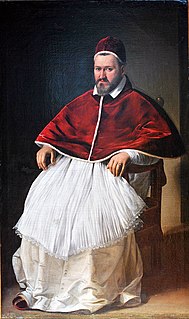
Pope Paul V, born Camillo Borghese, was head of the Catholic Church and ruler of the Papal States from 16 May 1605 to his death. In 1611, he honored Galileo Galilei as a member of the Papal Accademia dei Lincei and supported his discoveries. In 1616, Pope Paul V instructed Cardinal Bellarmine to inform Galileo that the Copernican theory could not be taught as fact, but Bellarmine's certificate allowed Galileo to continue his studies in search for evidence and use the geocentric model as a theoretical device. That same year Paul V assured Galileo that he was safe from persecution so long as he, the Pope, should live. Bellarmine's certificate was used by Galileo for his defense at the trial of 1633.

Sidereus Nuncius is a short astronomical treatise published in New Latin by Galileo Galilei on March 13, 1610. It was the first published scientific work based on observations made through a telescope, and it contains the results of Galileo's early observations of the imperfect and mountainous Moon, the hundreds of stars that were unable to be seen in either the Milky Way or certain constellations with the naked eye, and the Medicean Stars that appeared to be circling Jupiter.
The Accademia dei Lincei is one of the oldest and most prestigious European scientific institutions, located at the Palazzo Corsini on the Via della Lungara in Rome, Italy.

Vincenzo Galilei was an Italian lutenist, composer, and music theorist. His children included the astronomer and physicist Galileo Galilei and the lute virtuoso and composer Michelagnolo Galilei. Vincenzo was a figure in the musical life of the late Renaissance and contributed significantly to the musical revolution which demarcates the beginning of the Baroque era.
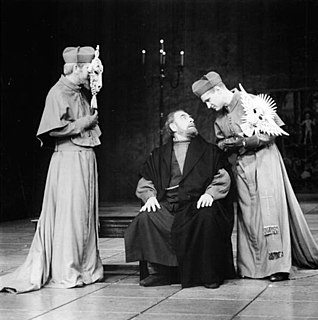
Life of Galileo, also known as Galileo, is a play by the 20th century German dramatist Bertolt Brecht with incidental music by Hanns Eisler. The play was written in 1938 and received its first theatrical production at the Zurich Schauspielhaus, opening on the 9th of September 1943. This production was directed by Leonard Steckel, with set-design by Teo Otto. The cast included Steckel himself, Karl Paryla and Wolfgang Langhoff.
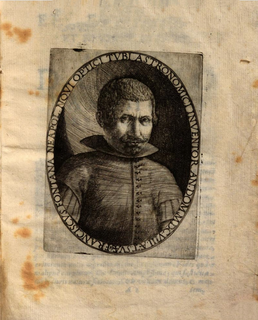
Francesco Fontana was an Italian lawyer and an astronomer.

Galileo Galilei is an opera based on excerpts from the life of Galileo Galilei which premiered in 2002 at Chicago's Goodman Theatre, as well as subsequent presentations at the Brooklyn Academy of Music's New Wave Music Festival and London's Barbican Theatre. Music by Philip Glass, libretto and original direction by Mary Zimmerman and Arnold Weinstein. The piece is presented in one act consisting of ten scenes without break.
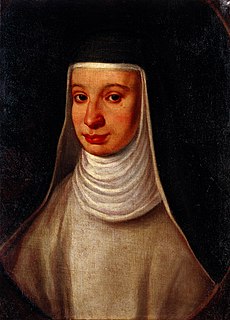
Sister Maria Celeste, born Virginia Galilei, was a nun. She was the daughter of the scientist Galileo Galilei and Marina Gamba.

Niccolò Zucchi was an Italian Jesuit, astronomer, and physicist.
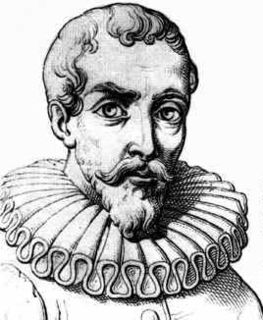
Guidobaldo del Monte, Marquis del Monte, was an Italian mathematician, philosopher and astronomer of the 16th century.
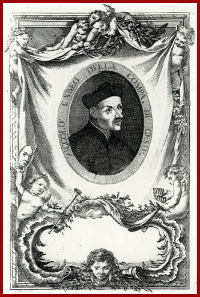
Niccolò Cabeo, also known as Nicolaus Cabeus, was an Italian Jesuit philosopher, theologian, engineer and mathematician.

The Galileo affair began around 1610 and culminated with the trial and condemnation of Galileo Galilei by the Roman Catholic Inquisition in 1633. Galileo was prosecuted for his support of heliocentrism, the astronomical model in which the Earth and planets revolve around the Sun at the centre of the universe.

A thermoscope is a device that shows changes in temperature. A typical design is a tube in which a liquid rises and falls as the temperature changes. The modern thermometer gradually evolved from it with the addition of a scale in the early 17th century and standardisation through the 17th and 18th centuries.

The Assayer was a book published in Rome by Galileo Galilei in October 1623 and is generally considered to be one of the pioneering works of the scientific method, first broaching the idea that the book of nature is to be read with mathematical tools rather than those of scholastic philosophy, as generally held at the time.
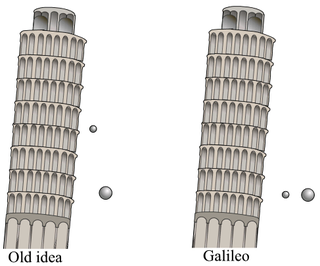
Between 1589 and 1592, the Italian scientist Galileo Galilei is said to have dropped two spheres of different masses from the Leaning Tower of Pisa to demonstrate that their time of descent was independent of their mass, according to a biography by Galileo's pupil Vincenzo Viviani, composed in 1654 and published in 1717. The basic premise had already been demonstrated by Italian experimenters a few decades earlier.
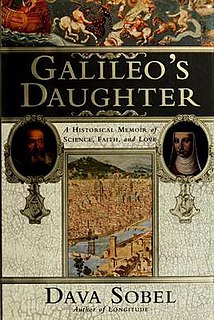
Galileo's Daughter: A Historical Memoir of Science, Faith, and Love is a book by Dava Sobel published in 1999. It is based on the surviving letters of Galileo Galilei's daughter, the nun Suor Maria Celeste, and explores the relationship between Galileo and his daughter. It was nominated for the 2000 Pulitzer Prize for Biography or Autobiography.

Giovanni Francesco Sagredo was a Venetian mathematician and close friend of Galileo. He was also a friend and correspondent of English scientist William Gilbert. He is remembered today mainly because he appears as one of the figures in Galileo's controversial work the Dialogue Concerning the Two Chief World Systems (1632).

Galileo di Vincenzo Bonaiuti de' Galilei was an astronomer, physicist and engineer, sometimes described as a polymath, from Pisa, in modern-day Italy. Galileo has been called the "father of observational astronomy", the "father of modern physics", the "father of the scientific method", and the "father of modern science".

Letters on Sunspots was a pamphlet written by Galileo Galilei in 1612 and published in Rome by the Accademia dei Lincei in 1613. In it, Galileo outlined his recent observation of dark spots on the face of the Sun. His claims were significant in undermining the traditional Aristotelian view that the Sun was both unflawed and unmoving. The Letters on Sunspots was a continuation of Sidereus Nuncius, Galileo's first work where he publicly declared that he believed that the Copernican system was correct.